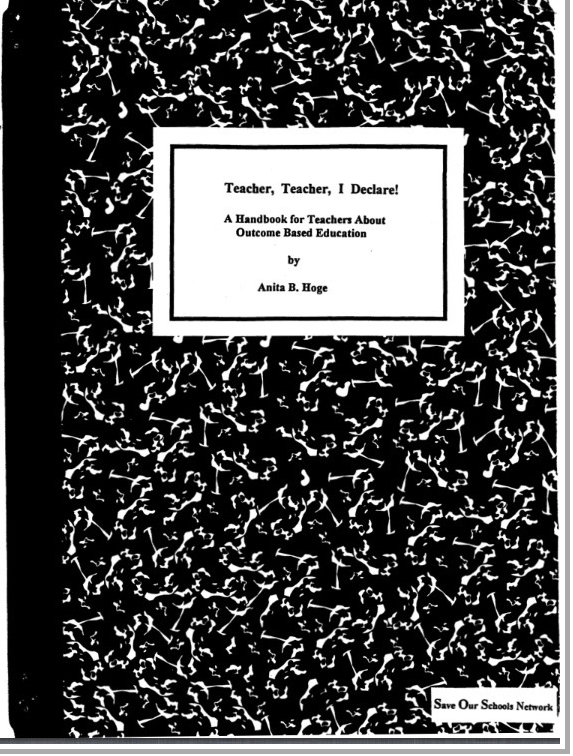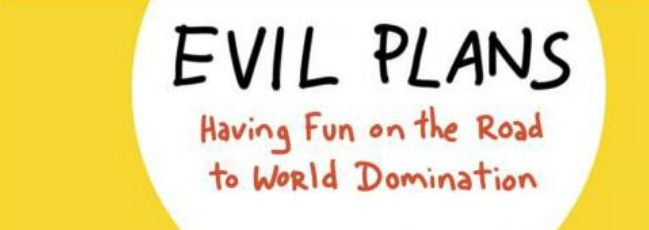|
Although, published in the mid1990’s, nothing explains Common Core Standards and the impact on teachers in the classroom, as this expose’ on the coming revolution in teacher education and teacher evaluation based on how well students perform on tests.
Common Core is not new. It is a revised, failed education system that has been systematically being forced on American students and American teachers since 1969, when NAEP began implementing a planned economy through education. Anita B. Hoge http://www.conspiracyplot.com/tag/mastery-learning/ It is of the utmost importance that parents understand why our education system is being so strangled and our children effectively "dumbed down" because if you do not, you will not only not know what you are fighting, but you won't know how to fight it. |
The GOODLAD Agenda
A DONE DEAL UNLESS YOU... YES YOU... WAKE UP!
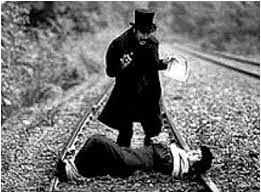
By Charlotte Iserbyt Friday, August 1, 2014 http://www.abcsofdumbdown.blogspot.com/2014/08/the-goodlad-agenda.html
One early morning, 1 a.m., 1981, while scrounging around in the National Institute of Education (NIE), the International Center for Educational Restructuring, I, Charlotte the "mole," while looking for a typewriter ribbon in a supply room, ran across a box entitled "The Goodlad Study." (See #3 below) Having followed John Goodlad, the No. 1 Change Agent for many years, having had many nightmares (when serving as a school board member ) regarding his destructive activities related to public education, I couldn't believe what I had found!!!
I had found the mother lode related to the destruction of our children's academic education and morals and values! This project had as its product four books, listed below. I contacted parents' groups nationwide with the information and we disseminated as much of it as possible. I am only divulging all this information now since Goodlad's project is being implemented as I write. (I guess I had hoped that all of us researchers/activists might have been able to stop the destructive freight train before it arrived at the station.)
We had not anticipated the so-called conservatives and corporations becoming wealthy passengers on that freight train. Double trouble, so to speak, and virtually impossible to stop.
One early morning, 1 a.m., 1981, while scrounging around in the National Institute of Education (NIE), the International Center for Educational Restructuring, I, Charlotte the "mole," while looking for a typewriter ribbon in a supply room, ran across a box entitled "The Goodlad Study." (See #3 below) Having followed John Goodlad, the No. 1 Change Agent for many years, having had many nightmares (when serving as a school board member ) regarding his destructive activities related to public education, I couldn't believe what I had found!!!
I had found the mother lode related to the destruction of our children's academic education and morals and values! This project had as its product four books, listed below. I contacted parents' groups nationwide with the information and we disseminated as much of it as possible. I am only divulging all this information now since Goodlad's project is being implemented as I write. (I guess I had hoped that all of us researchers/activists might have been able to stop the destructive freight train before it arrived at the station.)
We had not anticipated the so-called conservatives and corporations becoming wealthy passengers on that freight train. Double trouble, so to speak, and virtually impossible to stop.
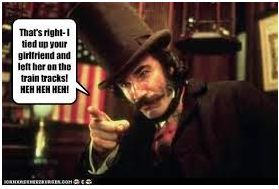
Who is on that freight train? Change Agents! This is especially interesting information, regarding the "Commie" nest coming out of Harvard, Brown University, Cambridge, and Chicago, which includes the works of Donald Davies; the late Theodore Sizer with his Coalition of Essential Schools (small schools philosophy which is charter schools); Tony Wagner of the Change Leadership Group, close to Davies, who is pushing the communist Finnish model of education on the USA; the Annenberg Foundation; Bill Ayers, Weatherman bomber; and Bill's brother, John Ayers, ex-VP of the Carnegie Foundation for the Advancement of Teaching, presently heading up the school choice/charter school and lifelong community education (pilot for the nation and international) agenda out of Tulane University in New Orleans.
Here are some important quotes out of the mouth of John Goodlad who I do believe is the world's major education Change Agent who has busy destroying every vestige of academic education and traditional values for over at least fifty years, with the help of many others who remain nameless as far as the average American is concerned.
The following excerpts come out of my book the deliberate dumbing down of america, and have been adapted, emphasized and reformatted for blog posting:
(1) Professor John Goodlad, the nation’s premiere Change Agent who has been receiving federal and tax-exempt foundation grants for at least thirty years, said in 1969:
The most controversial issues of the twenty-first century will pertain to the ends and means of modifying human behavior and who shall determine them. The first educational question will not be “what knowledge is of the most worth?” but “what kinds of human beings do we wish to produce?” The possibilities virtually defy our imagination. (p. 56)
Here are some important quotes out of the mouth of John Goodlad who I do believe is the world's major education Change Agent who has busy destroying every vestige of academic education and traditional values for over at least fifty years, with the help of many others who remain nameless as far as the average American is concerned.
The following excerpts come out of my book the deliberate dumbing down of america, and have been adapted, emphasized and reformatted for blog posting:
(1) Professor John Goodlad, the nation’s premiere Change Agent who has been receiving federal and tax-exempt foundation grants for at least thirty years, said in 1969:
The most controversial issues of the twenty-first century will pertain to the ends and means of modifying human behavior and who shall determine them. The first educational question will not be “what knowledge is of the most worth?” but “what kinds of human beings do we wish to produce?” The possibilities virtually defy our imagination. (p. 56)
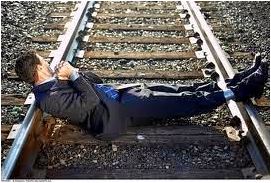
(2) Dr. John Goodlad’s A Report to the President’s Commission on School Finance, Issue #9, “Strategies for Change,” dated October 1971, explains that the Change Agent is the decision maker.
He decides which changes a school will make. The report states that five to fifteen percent of the people in a given community are open to change. They are the Early Majority and can be counted on to be supportive. A second group, 60 to 90 percent, are the Resisters; they need special attention and careful strategies. Also there are Leaders, formal and informal, and their support is critical for effecting change.In a diagram from the report… you will note that the change agent creates the Early Majority and influences the Leaders, and then gets both of these groups to act in concert with him to level a triple attack on the Resisters. Goodlad’s report to the President expressed concern about the willingness of the people to change: “People cannot be forced to change until they are psychologically ready.” (page 207)
He decides which changes a school will make. The report states that five to fifteen percent of the people in a given community are open to change. They are the Early Majority and can be counted on to be supportive. A second group, 60 to 90 percent, are the Resisters; they need special attention and careful strategies. Also there are Leaders, formal and informal, and their support is critical for effecting change.In a diagram from the report… you will note that the change agent creates the Early Majority and influences the Leaders, and then gets both of these groups to act in concert with him to level a triple attack on the Resisters. Goodlad’s report to the President expressed concern about the willingness of the people to change: “People cannot be forced to change until they are psychologically ready.” (page 207)

(3) John Goodlad, Ph.D.'s A Study of Schooling in the United States -- the national model being implemented today -- that I found at the National Institute of Education in 1982:
A STUDY OF SCHOOLING IN THE UNITED STATES BY JOHN GOODLAD, PH.D., DEAN OF THE Graduate School of Education, University of California, Los Angeles and associated with the Institute for Development of Educational Activities (I.D.E.A., funded by Kettering Foundation), was compiled in 1979 after being researched over a period of several years. Under Dr. Goodlad’s direction, trained investigators went into communities in most regions of the country. The sample of schools studied was enormously diverse in regard to size, family income, and racial composition of the student body. The result of the landmark report was A Place Called School: Prospects for the Future (McGraw-Hill: New York, 1984) by Goodlad.
A STUDY OF SCHOOLING IN THE UNITED STATES BY JOHN GOODLAD, PH.D., DEAN OF THE Graduate School of Education, University of California, Los Angeles and associated with the Institute for Development of Educational Activities (I.D.E.A., funded by Kettering Foundation), was compiled in 1979 after being researched over a period of several years. Under Dr. Goodlad’s direction, trained investigators went into communities in most regions of the country. The sample of schools studied was enormously diverse in regard to size, family income, and racial composition of the student body. The result of the landmark report was A Place Called School: Prospects for the Future (McGraw-Hill: New York, 1984) by Goodlad.
- A Place Called School: Prospects for the Future, John Goodlad, proposed pushing high school graduation back to age 16 and having all students take a core curriculum until then. A new “fourth phase of education” would combine work, study, and community service to help ease students’ transition into careers, higher education, and adult responsibilities. The following three books were additionally commissioned to be written as a result of this project:
- Schooling for a Global Age, James Becker, Editor (1979), in the preface for which Dr. Goodlad made the following statement which has contributed to the development of parent school partnerships
- Parents and the general public must be reached, also. Otherwise, children and youth enrolled in globally-oriented programs may find themselvesin conflict with values assumed in the home.And then the education institution frequently comes under scrutiny and must pull back.
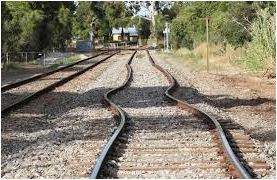
Communities and Their Schools, Don Davies, Editor (1981), in which the history of community education at the national and international levels (China, Tanzania, etc.) was covered and the participatory democratic operation of our schools and communities was recommended (government by unelected councils).
- Arts and the Schools, Jerome J. Hausman, Editor (1980), in which the role of the arts in schools and in society was examined and then the focus shifted to the needs of the individual. Arts addressed curricular issues involved in designing and implementing school arts programs and, again, actual programs are discussed and analyzed. The policy implications of implementing the programs described in the book are then discussed along with change strategies for moving from rhetoric to reality.
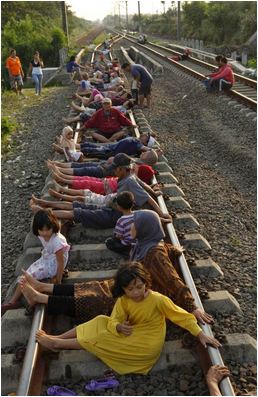
[Ed. Note: In a telephone conversation with a representative of McGraw Hill Publishers in 1982, this writer was informed that all four books were provided to the fifty state education commissioners/superintendents. These four books provide an accurate picture of the role played by the tax-exempt foundations and federal government in the restructuring/social engineering of American society and schools to accommodate the perceived “needs” of the 21st century.] (pp. 151-152)
(4) PROFESSOR JOHN I. GOODLAD, president of Educational Inquiry, Incorporated, appeared in A Report to the President’s Commission on School Finance (Schooling for the Future: Toward Quality and Equality in American Precollegiate Education) October 15, 1971. Goodlad makes the following comments under “Issue #9—Educational Innovation: What changes in purposes, procedures or institutional arrangements are needed to improve the quality of American elementary and secondary education?”:
The literature on how we socialize or develop normative behavior in our children and the populace in general is fairly dismal.... [T]he majority of our youth still hold the same values as their parents....In the second paradigm... the suggestion is made thatthere are different targets for the change agent. For example, in a social system such as a school probably five to fifteen percent of the people are open to change. They are the “early majority” and can be counted on to be supportive. A second group, sixty to ninety percent, are the resisters. They need special attention and careful strategies need to be employed with them. Also, there are the leaders, formal and informal, and their support is critical. In his research, for example, Demeter noted some time ago the special role of the school principal in innovation:Building principals are key figures in the (innovation) process. Where they are both aware of and sympathetic to an innovation, it tends to prosper. Where they are ignorant of its existence, or apathetic if not hostile, it tends to remain outside the bloodstream of the school.
(4) PROFESSOR JOHN I. GOODLAD, president of Educational Inquiry, Incorporated, appeared in A Report to the President’s Commission on School Finance (Schooling for the Future: Toward Quality and Equality in American Precollegiate Education) October 15, 1971. Goodlad makes the following comments under “Issue #9—Educational Innovation: What changes in purposes, procedures or institutional arrangements are needed to improve the quality of American elementary and secondary education?”:
The literature on how we socialize or develop normative behavior in our children and the populace in general is fairly dismal.... [T]he majority of our youth still hold the same values as their parents....In the second paradigm... the suggestion is made thatthere are different targets for the change agent. For example, in a social system such as a school probably five to fifteen percent of the people are open to change. They are the “early majority” and can be counted on to be supportive. A second group, sixty to ninety percent, are the resisters. They need special attention and careful strategies need to be employed with them. Also, there are the leaders, formal and informal, and their support is critical. In his research, for example, Demeter noted some time ago the special role of the school principal in innovation:Building principals are key figures in the (innovation) process. Where they are both aware of and sympathetic to an innovation, it tends to prosper. Where they are ignorant of its existence, or apathetic if not hostile, it tends to remain outside the bloodstream of the school.
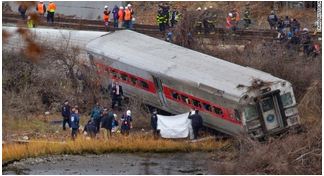
Few people think in these ways today. Rather, as a people, we tend to rely upon common sense or what might be called conventional wisdom as we make significant decisions which, in turn, seriously affect our lives.... More often than not, school board members, parents and the public make important decisions about what should happen in their schools based upon these past experiences or other conventional wisdom.... The use of conventional wisdom as a basis for decision-making is a major impediment to educational improvement....
The child of suburbia is likely to be a materialist and somewhat of a hypocrite. He tends to be a striver in school, a conformist, and above all a believer in being “nice,” polite, clean and tidy. He divides Humanity into the black and white, the Jew and the Christian, the rich and the poor, the “smart” and the “dumb.” He is often conspicuously self-centered. In all these respects, the suburban child patterns his attitudes after those of his parents.... If we do not alter this pattern, if we do notresocialize ourselves to accept and plan for change, our society may decay. What may be left in the not too distant future is what other formerly great societies have had, reflections on past glories....
In the social interaction model of change, the assumption is made that the change agent is the decision-maker about the innovation. That is, it is assumed that he decides what the adopter will change to. This is a serious problem for two very good reasons. First, as we have shown, people cannot be forced to change until they are psychologically ready. Thus, at every stage, each individual is, in fact, deciding how far he is ready or willing to move, if at all.
[Ed. Note: As a former school board member, this writer can relate to the above quote. Principals who resisted innovation eventually ended up being forced out of the system undergoing radical change. Their trials and tribulations were known only to them, and what they underwent during the change agents’ activities in their schools could be described as inhumane treatment.]
(p. 106-107)
STOP SCHOOL CHOICE/ CHARTER SCHOOLS/ COMMUNITY EDUCATION AGENDA!!!!!!
The child of suburbia is likely to be a materialist and somewhat of a hypocrite. He tends to be a striver in school, a conformist, and above all a believer in being “nice,” polite, clean and tidy. He divides Humanity into the black and white, the Jew and the Christian, the rich and the poor, the “smart” and the “dumb.” He is often conspicuously self-centered. In all these respects, the suburban child patterns his attitudes after those of his parents.... If we do not alter this pattern, if we do notresocialize ourselves to accept and plan for change, our society may decay. What may be left in the not too distant future is what other formerly great societies have had, reflections on past glories....
In the social interaction model of change, the assumption is made that the change agent is the decision-maker about the innovation. That is, it is assumed that he decides what the adopter will change to. This is a serious problem for two very good reasons. First, as we have shown, people cannot be forced to change until they are psychologically ready. Thus, at every stage, each individual is, in fact, deciding how far he is ready or willing to move, if at all.
[Ed. Note: As a former school board member, this writer can relate to the above quote. Principals who resisted innovation eventually ended up being forced out of the system undergoing radical change. Their trials and tribulations were known only to them, and what they underwent during the change agents’ activities in their schools could be described as inhumane treatment.]
(p. 106-107)
STOP SCHOOL CHOICE/ CHARTER SCHOOLS/ COMMUNITY EDUCATION AGENDA!!!!!!
